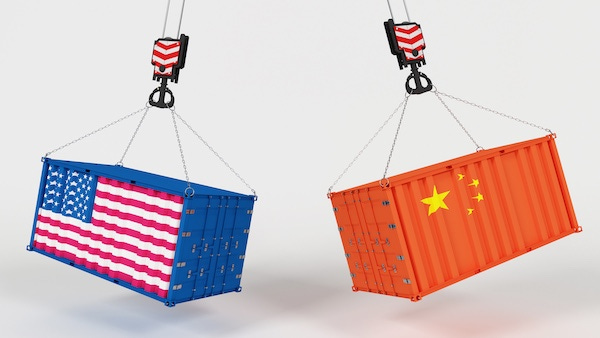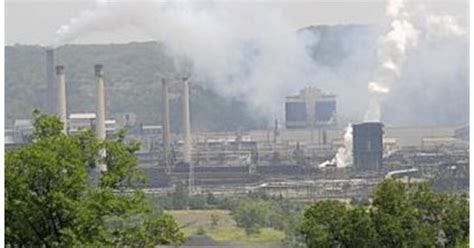Some years ago, I was searching for a new Apple computer to replace my existing one. To my dismay, I found out that no Apple computer was built in the USA. They were all built or assembled in China. Similarly, I discovered when I needed a new iPhone, they were also built in China, so I decided to get an LG phone from South Korea instead.
Also, several years ago, I needed a new bike top. Everywhere I looked, each one was manufactured in China. Then, I found a bike shop that sold an Italian-made top. In time, I got frustrated trying to buy non-Chinese products. It was a futile endeavour.
I have travelled extensively through the U.S., and a feature of the American landscape is Walmarts. This giant retailer sells various goods: clothing, technology, food, medications, home improvements, and sporting goods. Where do most of these products come from? It’s no surprise that China supplies 80% of the products.
For convenience, people can park their RVs while they peruse a store, which is, in a way, like a small city filled with Chinese goodies. Similarly, Bunnings is a home improvement supplier in Australia, and most of its products are sourced from China.
Now, Trump has struck a 104% tariff hit on China. Is such a tariff really wise? Will that bring manufacturing back to the U.S.? There is one thing it will do; it will cause a surge in prices. The average hard-working American will pay more; that is a certainty.
A friend of mine, who is now retired, took over a garage roller door company. He regularly flew to China because that is where the company manufactured the doors. They were then imported for the Australian market. There was only one rationale for importing the doors from China: the wages in Australia are too high, so the cost of manufacturing would be prohibitive.
It’s fanciful to believe that with some tariffs, America will become a manufacturing power akin to its former glory quickly. This would take many years.
I remember Pittsburgh Pennsylvania of the 1960s and 70s. It was ‘Steel City USA’. The pollution was horrendous.
We hear that China is building one coal-fired plant a week—so much for net zero. In Western Australia, it takes a year in most cases to build a single-story home, and up to two years to build a double-story home. The government regulates minimum wages and different sector industries. People engaged in trades have wages much higher than those in China.
Average annual income:
U.S.: $80,450
Australia: $63,150
China: $13,190
Vietnam: $4110
So, the average wage in the U.S. is six times that of a Chinese worker.
The statutory number of annual leave days in China is five per year for the first 10 years if a worker stays with the same employer. Beyond 10 years, it’s 10 days. Just as a comparison, in Australia, every worker gets 4 weeks of annual leave after 12 months of employment. In addition, many get three months of service leave after 7 years in the civil service or 12 years in the private sector.
China now produces 28.7% of the total global manufacturing output. Many retailers and other businesses depend on importing Chinese goods. Can you imagine the implications for U.S. businesses, consumers, and workers with 104% tariffs or greater?
Unfortunately, the horse has already bolted out of the gate. Something should have been done years ago, ensuring China was reigned in. But businesses saw opportunities to increase their profits, so here we are. Fixing America’s problems vis-a-vis China will not come about by heavy tariffs. It will create turmoil, and perhaps even worse, it could be a catalyst forChina to move on Taiwan, which produces most of the world’s chips. In fact, one company, the Taiwan Semiconductor Manufacturing Company (TSMC), makes at least 90 per cent of the world’s most advanced computer chips. What would that do to Western economies if China blocked movement in and out of the island nation? I think a trade war is playing with fire.
It’s not all bad news. According to the Bureau of Economic Analysis, the U.S. had a $278 billion surplus in services. What are services? These are items such as education, healthcare, travel and hotels, financial services, media and entertainment, insurance, and digital software technology.
Did Trump mention this on ‘Liberation Day’? The idea is to invest in the workforce of the future. We can’t go back to the past. Besides, robots will take over much of the work in the factories of the future.







Agree with you Ely "It will create turmoil, and perhaps even worse, it could be a catalyst forChina to move on Taiwan".
Disagree with "Something should have been done years ago, ensuring China was reigned in."
I consider that we who are against coercive tariffs and for free trade should be arguing from the moral position as well as the economic one and point out that
"When Goods Do Not Cross Borders, Soldiers Will".
I wished you would have joined our Free Friends Forum to discuss this, hopefully get you there one day?
Free Friends Forum 39: Free Trade For A Peaceful World—Against Coercive Tariffs
When Goods Do Not Cross Borders, Soldiers Will
https://responsiblyfree.substack.com/p/free-friends-forum-39-free-trade
Get free, stay free.
It had to be. It is already a war and being vamped up to take over the west. There is no choice but to say no more